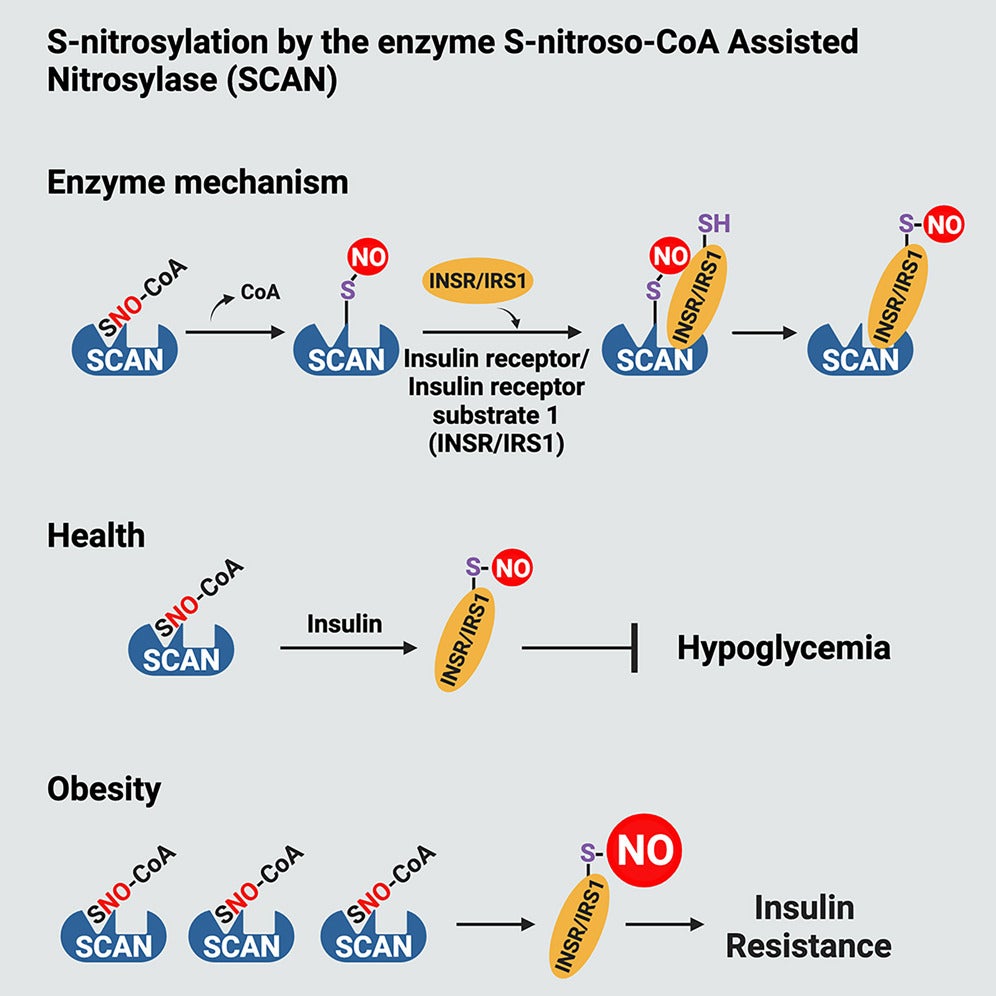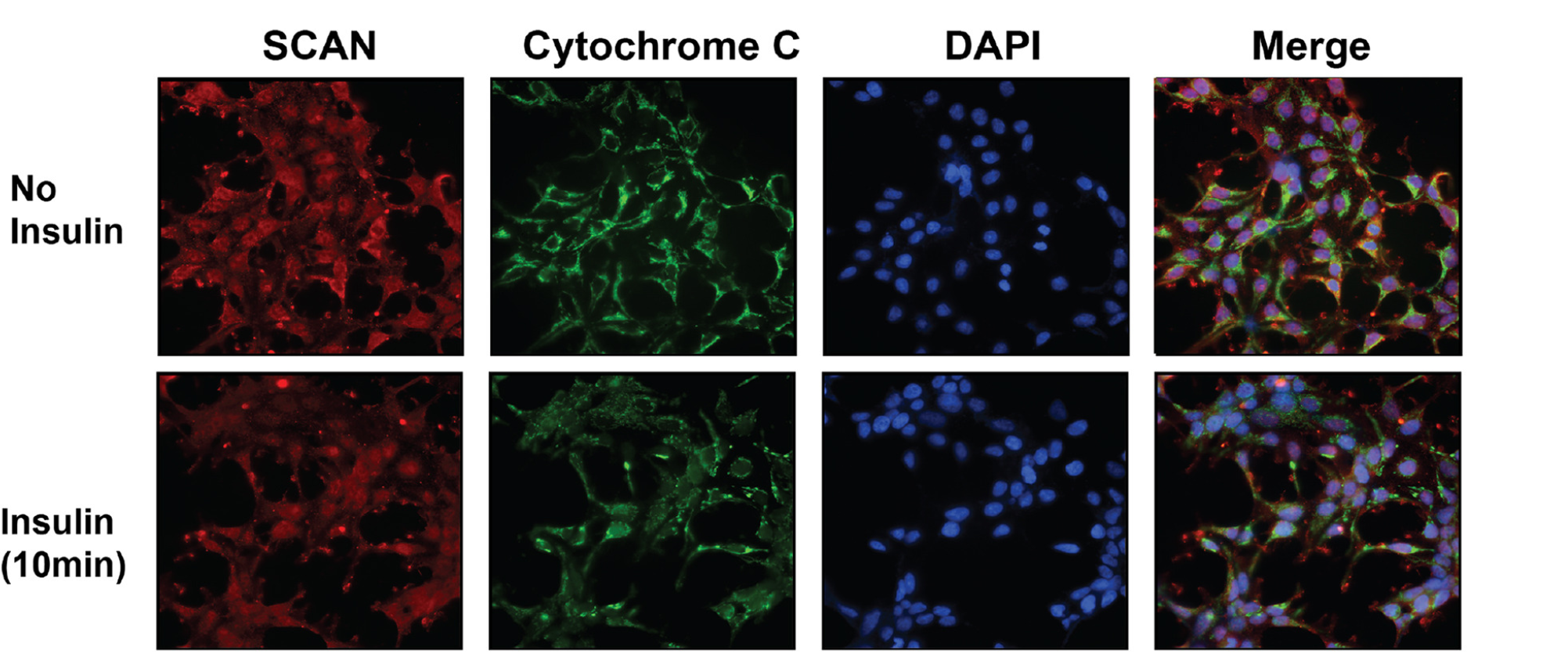A groundbreaking discovery has unveiled a promising avenue in diabetes research. Scientists have identified a novel enzyme, SNO-CoA-assisted nitrosylase (SCAN), which plays a crucial role in regulating insulin production.
The study, conducted by researchers from Case Western Reserve University and University Hospitals, sheds light on a previously unknown mechanism that might open doors for new treatments.
The findings, published in Cell, delve into the intricate role of nitric oxide (NO) in the body. Known for its diverse functions—from aiding blood vessel dilation to enhancing memory and facilitating immune responses—NO’s interaction with proteins is now under the spotlight.
The SCAN enzyme is at the heart of this discovery, as it uses a unique mechanism to attach NO to specific proteins, including those crucial for insulin signaling.

Nitric oxide’s influence on cellular signaling has been a topic of interest for years. Coenzyme A (CoA), already known for its metabolic roles, has been identified as a carrier of NO through a compound called SNO-CoA.
This molecule facilitates the transfer of NO to proteins, a process termed S-nitrosylation. The SCAN enzyme employs this mechanism, selectively nitrosylating target proteins such as the insulin receptor and its substrates.
Interestingly, the researchers discovered elevated SCAN activity in diabetic patients and mouse models of diabetes. This heightened activity disrupts normal insulin signaling, contributing to the disease’s progression.
Lead researcher Jonathan Stamler emphasized the enzyme’s significance, stating, “We show that blocking this enzyme protects from diabetes, but the implications extend to many diseases likely caused by novel enzymes that add nitric oxide.”
Related Stories
Diabetes is marked by the body’s diminished ability to respond to insulin, leading to high blood sugar levels. Over time, this can result in severe complications such as heart disease, vision impairment, and kidney dysfunction. Despite its prevalence, the underlying mechanisms of insulin resistance remain elusive.
The study’s findings provide a potential breakthrough. Mice lacking the SCAN enzyme displayed resistance to diabetes, highlighting the enzyme’s pivotal role.
Stamler explained, “This paper shows that dedicated enzymes mediate the many effects of nitric oxide. Too much enzyme activity causes diabetes. But a case is made for many enzymes putting nitric oxide on many proteins, and, thus, new treatments for many diseases.”
Nitric oxide has been implicated in various conditions, including Alzheimer’s, cancer, and heart failure. The discovery of SCAN underscores the importance of targeted enzymes in mediating NO’s effects, offering hope for novel therapeutic approaches.

SCAN’s discovery builds on decades of research into CoA and its derivatives. CoA plays a role in metabolic and signaling functions, including histone acetylation and protein modification. However, its role in NO transport via SNO-CoA adds a new dimension to its biological significance.
SNO-CoA participates in a reversible equilibrium with target proteins, facilitating precise control over cellular NO levels. Unlike non-specific chemical modifications traditionally associated with NO, SCAN introduces an enzymatic mechanism, drawing parallels to other signal transduction processes like phosphorylation.
This discovery challenges the conventional view of NO’s indiscriminate protein modification and establishes a structured enzymatic pathway.
The team’s experiments also revealed that SCAN’s activity depends on nitric oxide synthase (NOS), which generates the SNO-CoA cofactor. By elucidating SCAN’s mechanisms, the researchers have provided a framework for understanding its role in both normal physiology and disease.

The implications of this research extend far beyond diabetes. By identifying SCAN as a key player in NO biology, the study opens the door to targeted treatments for various NO-related diseases. As Stamler noted, “Blocking this enzyme may offer a new treatment.”
The research team, including Hualin Zhou, Richard Premont, and students Zack Grimmett and Nicholas Venetos, aims to develop medications targeting SCAN. These efforts could revolutionize diabetes treatment and address other conditions linked to NO dysregulation.
Diabetes remains a global health challenge, affecting millions worldwide. By unraveling the complexities of insulin resistance, this study marks a significant step forward. The discovery of SCAN not only advances scientific understanding but also holds promise for innovative therapies that could transform lives.
Note: Materials provided above by The Brighter Side of News. Content may be edited for style and length.
Like these kind of feel good stories? Get The Brighter Side of News’ newsletter.
The post New enzyme discovery offers hope for millions of diabetes patients appeared first on The Brighter Side of News.
Leave a comment
You must be logged in to post a comment.